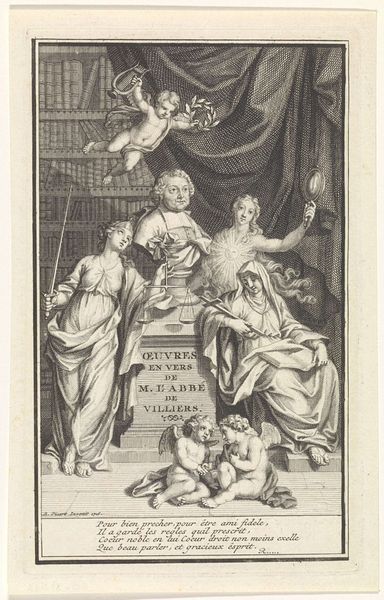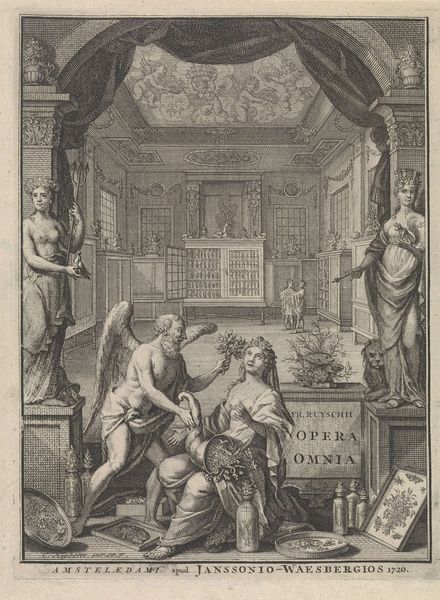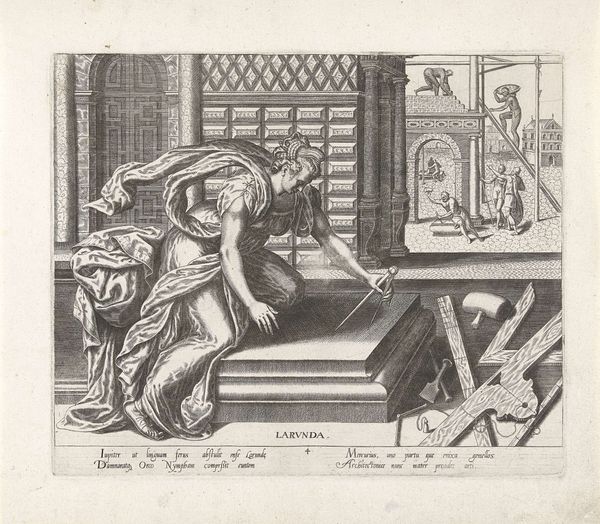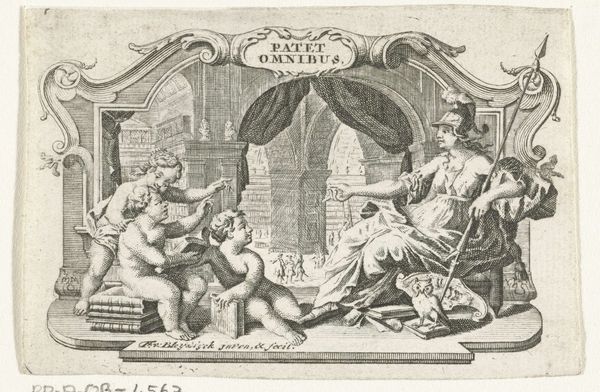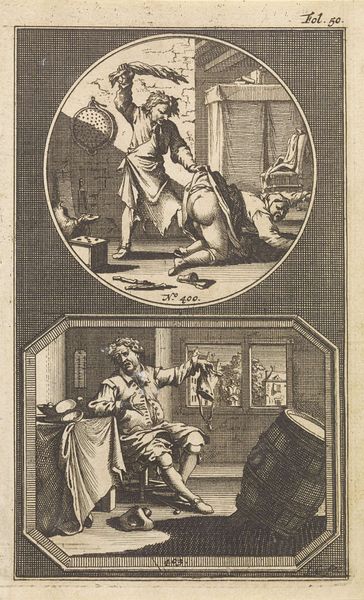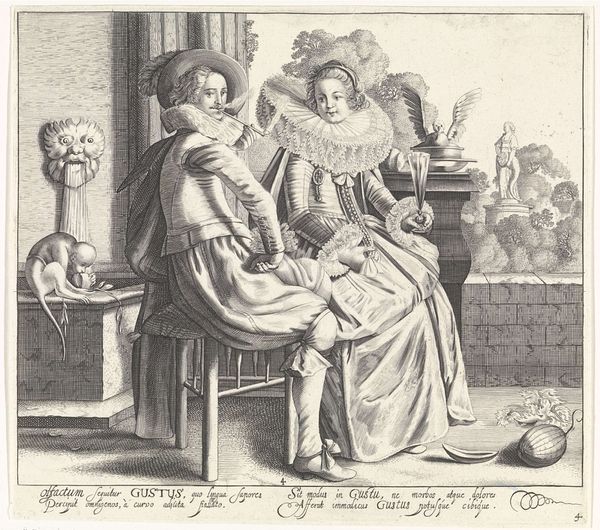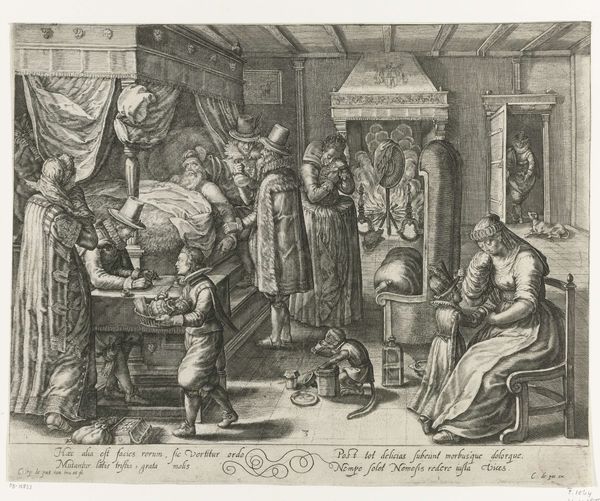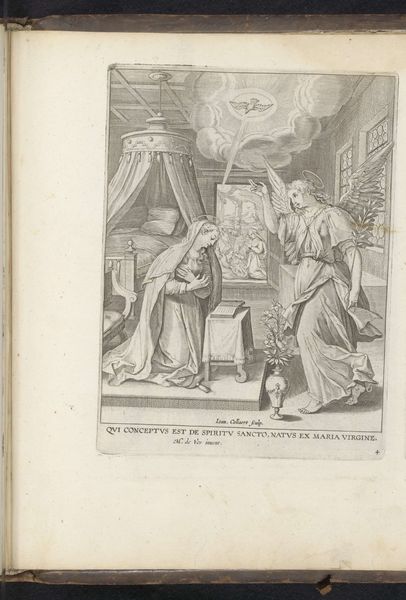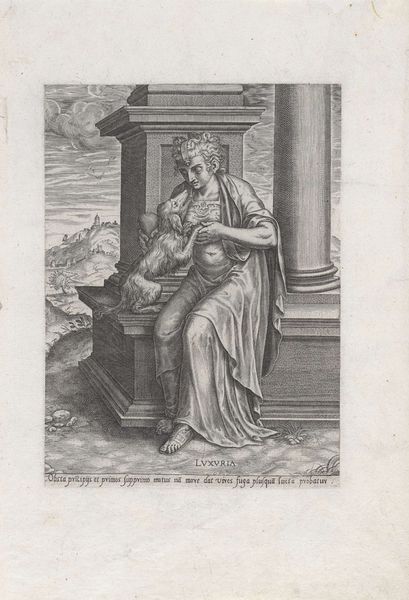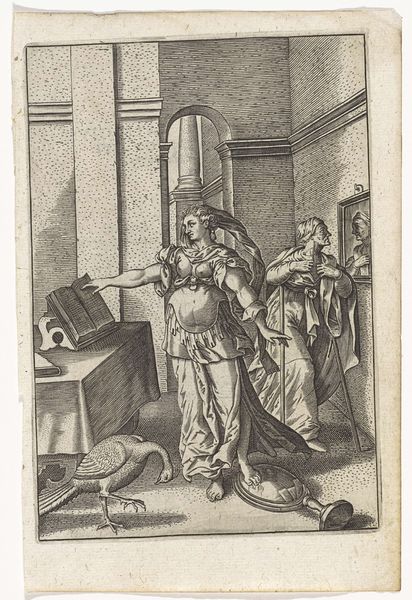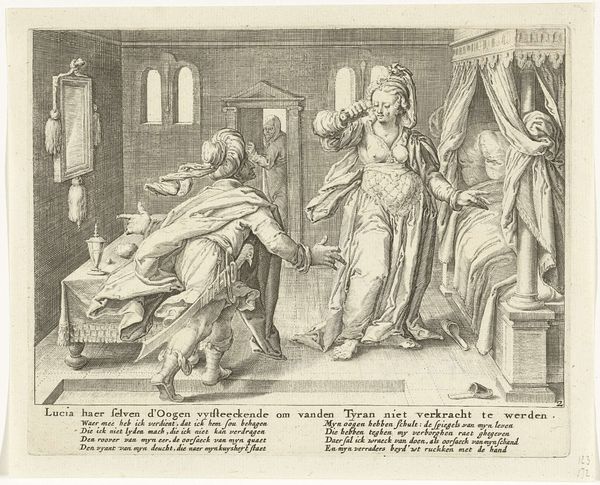
print, engraving
#
allegory
# print
#
perspective
#
figuration
#
11_renaissance
#
line
#
history-painting
#
northern-renaissance
#
academic-art
#
engraving
Dimensions: height 206 mm, width 245 mm
Copyright: Rijks Museum: Open Domain
Philips Galle’s “Staatskunde,” created around 1600, presents a female allegory of governance holding a tablet inscribed with laws. This tablet is a powerful symbol, echoing the Ten Commandments and ancient Roman legal codes. This motif of the inscribed tablet recurs throughout history. In ancient Mesopotamia, the Law Code of Hammurabi was similarly presented, conveying divine legitimacy and enduring authority. The act of inscription itself embodies an effort to immortalize principles, a striving to make abstract ideas concrete and everlasting. Observe how the gesture of display—the open presentation of these laws—invites scrutiny and demands adherence. This posture, reminiscent of classical orators, carries an emotional weight, compelling both respect and a certain level of subconscious compliance. The image resonates with an underlying tension between power and responsibility. Ultimately, the tablet symbolizes humanity’s persistent effort to codify and understand the moral and legal frameworks that govern society, an effort that eternally evolves, adapts, and reappears across cultures and eras.
Comments
No comments
Be the first to comment and join the conversation on the ultimate creative platform.
